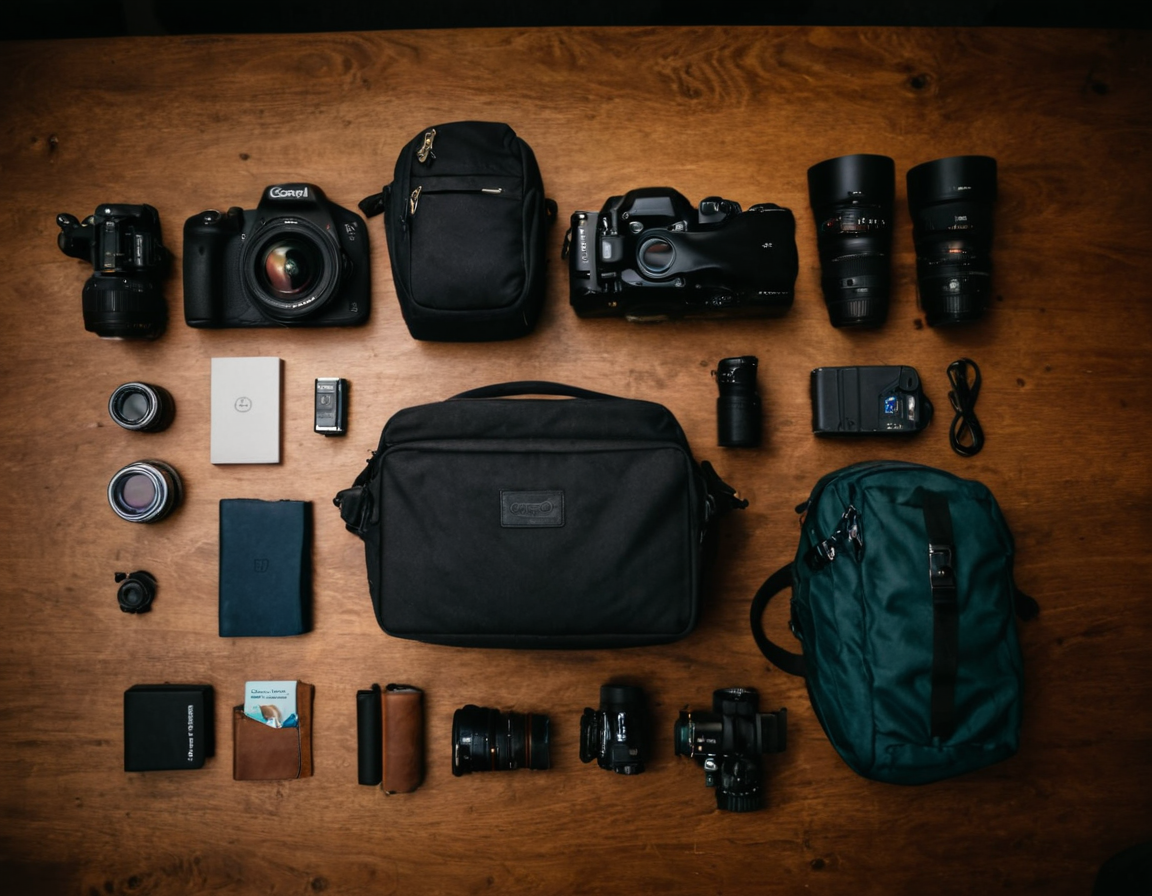Light Packing Guide - Camera Gear Selection

Mastering the Art of Packing Light: A Comprehensive Guide to Selecting the Right Camera Gear for Extended Travel Shoots
As a travel photographer, one of the most significant challenges you’ll face is packing light without sacrificing essential camera gear. This comprehensive guide will walk you through the process of selecting the right equipment for extended travel shoots, ensuring you’re well-prepared for any situation.
Introduction
The art of packing light has become an essential skill for any serious photographer. Not only does it save time and hassle, but it also reduces the risk of losing or damaging valuable gear during transit. In this article, we’ll delve into the world of camera gear and explore the best practices for selecting the right equipment for extended travel shoots.
Understanding Your Needs
Before you start researching camera gear, it’s essential to understand your specific needs. What type of photography will you be doing? Will you be shooting in harsh weather conditions or in crowded cities? Are there any specific features or functionalities that are crucial to your work?
- Identify your priorities
- Consider the environment and situations you’ll encounter
- Make a list of must-haves and nice-to-haves
Camera Bodies and Lenses
Camera bodies and lenses are the foundation of your camera gear. Here are some factors to consider when selecting these components:
- Camera Body: Look for a body that’s weather-sealed, has good autofocus performance, and is capable of raw image capture.
- Lenses: Choose lenses that are compact, lightweight, and have a wide aperture range (e.g., f/1.4 - f/22). Consider the focal length range and any specific features required for your work.
Example:
For travel photography, a camera body with a full-frame sensor and weather-sealing is essential. Look for a body with good autofocus performance and the ability to capture raw images.
- Canon EOS 5D Mark IV or
- Nikon D850
Additional Accessories
While the camera body and lenses are crucial, additional accessories can make a significant difference in your overall shooting experience. Here are some essentials to consider:
- Tripod: A good tripod is essential for low-light photography and time-lapses.
- Remote Shutter Release or Camera Timer: This helps prevent camera shake and ensures consistent results.
- Memory Cards: Bring enough memory cards to store all your images, considering the storage capacity and speed.
Example:
Investing in a good tripod can help you capture sharper images, especially in low-light conditions. Look for a sturdy tripod with smooth panhead functionality.
- Gitzo GT3543LS Systematic Fluid Panhead
The Art of Packing Light
Now that we’ve covered the camera gear essentials, let’s talk about packing light. Here are some tips to help you do so:
- Use a Carry-On: Invest in a good carry-on bag with multiple compartments and pockets.
- Pack Multi-Functional Gear: Choose gear that serves multiple purposes, reducing the need for separate items.
- Wear Your Gear: Consider wearing your camera gear or accessories to save space in your luggage.
Example:
Instead of bringing a separate remote shutter release, consider using the camera’s built-in timer or wear a camera strap with a built-in remote functionality.
Conclusion
Mastering the art of packing light requires careful planning and research. By understanding your needs, selecting the right camera gear, and implementing practical packing strategies, you’ll be well-prepared for any situation. Remember, it’s not about bringing every piece of gear imaginable; it’s about being thoughtful and intentional with what you bring.
-
Are you ready to take your travel photography to the next level?
-
Share your favorite tips and tricks for packing light in the comments below!
Tags
lightweight-travel-photography camera-gear-selection extended-trip-shooting essential-kit packable-equipment
About Teresa Gomez
Photography enthusiast & blogger Teresa Gomez shares her expertise on inspiring photography techniques, tutorials, and tools to help creatives elevate their craft at lentecreativa.com.
